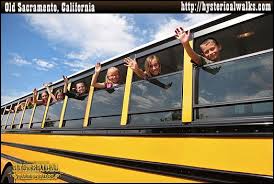Need an alternative education for your child? Check us out! http://t.co/M0bIUgQsPt
— Victoria Stafford (@vastafford) October 29, 2013
One Teacher’s Epiphany
Harvard Magazine has a brilliant article about one professor’s epiphany about alternative teaching methods and thinking outside the box. As the article, written by Craig Lambert, explains, professor Eric Mazur was teaching a course when “a warning flag went up when one student raised her hand and asked, “How should I answer these questions—according to what you taught me, or how I usually think about these things?” To Mazur’s consternation, the simple test of conceptual understanding showed that his students had not grasped the basic ideas of his physics course: two-thirds of them were modern Aristotelians. “The students did well on textbook-style problems,” he explains. “They had a bag of tricks, formulas to apply. But that was solving problems by rote. They floundered on the simple word problems, which demanded a real understanding of the concepts behind the formulas.””
The article explains how Professor Mazur took this obstacle and worked with it to enhance student learning. As the article explains, “This innovative style of learning grew into “peer instruction” or “interactive learning,” a pedagogical method that has spread far beyond physics and taken root on campuses nationally. Last year, Mazur gave nearly 100 lectures on the subject at venues all around the world.”
Learn more by reading the full article at http://harvardmagazine.com/2012/03/twilight-of-the-lecture
Why Montessori?
One very popular type of alternative education is the Montessori school. Most people have probably heard this term, even if they don’t know exactly what it means or entails. The Montessori method of teaching was started by Dr. Maria Montessori. She was the first woman in Italy to earn her physician’s degree and she developed a new educational model.
She used her method with folding tables and other basic supplies to teach 50 poor students near Rome in 1907. She did not believe that children were born as “blank slates” but that they were fully capable of self-directed learning. She believed that children needed long blocks of time when they could concentrate and the school allows for student-driven learning while the teacher is more of an observer.
She believed strongly in tactile learning and the classroom materials would include many items to touch and use. The method is one that is entirely non-competitive and has no grades, tests or other formal assessments.
Today, this method is used in about 5000 schools in the US and studies have found that students at these schools have higher levels of self-confidence, better social skills and better academic skills when they finish their early learning years here.
Banner Learning Corporation
Here is one example of an educational option for alternative education. At Banner, they have alternative education programs, therapeutic day options and more. As they explain on their website,
“Banner operates therapeutic schools for students with emotional, behavioral and learning disorders, as well as other disabilities. Banner’s therapeutic program is designed specifically for students who are generally considered the most challenging to educate. Banner welcomes these students and takes great pride in educating them. Banner’s innovative special educational program instills confidence and builds the competence of each of its students. Banner works closely with the school district to insure that each student’s Individualized Education Program (IEP) is fully satisfied. Banner employs an IEP compliance officer. The IEP compliance officer’s primary function is to monitor IEPs and see that each and every requirement is met. The IEP compliance officer maintains close contact with the district’s special education staff.”
There are many choices that allow the family to make the best educational decision for their needs.
Alternative Learning Techniques
Alternative learning often puts off many people. They think that this phrase means that students will be sitting in a meadow doing yoga or going to a museum ever day without ever learning in a structured classroom. Rather, alternative learning or teaching methods simply mean that the teacher and school are moving away from traditional teaching methods and are exploring other options. Here are a few suggestions for adding some alternative teaching methods into the classroom without having to shake up the foundation of the entire school.
1. Tactile learning: Think about the students who really need to touch and feel in order to process their learning. Teach math using building blocks. Teach science by bringing in animals or plants.
2. Different assessments: You don’t have to always give a multiple choice test for assessment. Think of having students write a story in English class or act out a play. Let them create a scene in an office where the person sitting behind the reception desk is talking to a character from the book. In history, they could put on a trial or write a treaty. In science they could conduct an experiment. These are great ways to assess student understanding and strengths without pen and paper.
3. Field trips: Take kids on more trips. Get them out of their chairs and into the museums, botanical gardens and other locations in your area where they can learn in a new way.
These are a few suggestions for helping children to blossom and grow without requiring them to sit behind desks all the time and learn with paper and pencils.
Creative College Choices
Find out about alternative education opportunities in the college arena.


